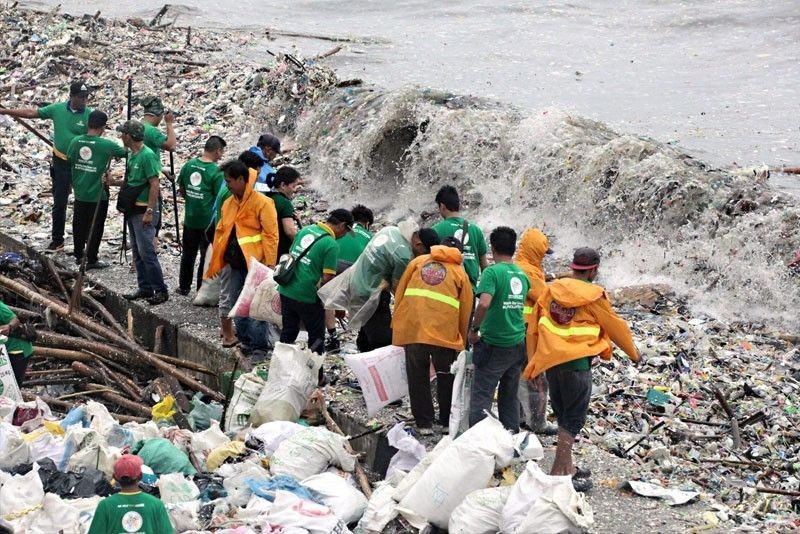Closing the loop on plastic

Earlier this year, a World Bank report found that globally, about 4.8 to 12.7 million tonnes of mismanaged plastic enter the ocean every year. Of that amount, about 80% comes from Asia. But the Philippines alone contributes an estimated 0.75 million metric tons of plastic waste in the ocean and is the third-largest contributor globally.
Not only that, but a journal article also published earlier this year identified the Pasig River as the world’s top plastic pollution source. Unfortunately, the Philippines did not only top this list but another six of its rivers were also among the world’s ten worst plastic waste emitters.
Indeed, the COVID-19 pandemic has only further contributed to increased plastic waste in the ocean. According to a research team led by Professor Yong Sik Ok from Korea University, because of the pandemic, the consumption of plastic skyrocketed in 2020. Based on their estimates, twice the amount of plastic waste was generated globally last year than was the previous year.
However, this spike in the use of plastic cannot solely be attributed to the sudden demand for disposable face masks, face shields, and personal protective equipment. As a result of the lockdowns that were put in place to slow the spread of COVID-19, getting take-out and ordering in— which often involve the use of single-use plastic packaging and disposable cutlery— have become all the more common.
This worsening global plastic waste situation led the research team to conclude that “in the long-term, though, current plastic waste management schemes alone cannot keep pace with the estimated growth in plastic waste generation, even if capacity is increased.” In their article published in the Nature Reviews Earth & Environment, the researchers further argued that COVID-19 has only magnified the already existing plastic crisis and emphasized the need to shift to a plastic circular economy immediately.
However, for this transition to a plastic circular economy to happen, everyone must do their part.
And like any good movement, it has to begin at home. Take proper waste segregation, for instance. According to Republic Act 9003, or the Ecological Solid Waste Management Act, segregation at source is mandatory. However, according to the Department of Environment and Natural Resources’ figures, only 30% of barangays in the country segregate waste.
It is high time Filipinos realize those three differently colored trash cans beside each other in the mall aren’t one trash can plus two extra just in case the first one gets full. They are for segregating biodegradable, compostable, and reusable waste.
Furthermore, as consumers, we can also be more mindful of the amount of plastic we use. This could mean reducing our use of single-use plastics like straws and plastic bags. It could also mean becoming conscious that the products you buy are using reusable or recyclable materials. But, of course, the decision to shift consumption towards more environmentally-friendly alternatives isn’t always an option for households living sachet-to-sachet.
For this reason, it is also crucial that government does its part by improving its waste collection and its materials recovery and recycling facilities. In fact, according to the study conducted by Ocean Conservancy, the most significant driver of plastic leakage into the ocean is waste that remains uncollected. Hence, the government must expand collection services and close or improve dump sites near waterways.
Industries, too, play a crucial role in the transition towards a plastic circular economy. Technological breakthroughs in the manufacturing process and the materials used in consumer goods are essential to closing the plastic loop. And more often than not, it is industry that drives innovation in this space.
Take the familiar beverage maker Coca-Cola for example; they recently announced that the country’s first food-grade bottle-to-bottle recycling facility is set to start operations by the first quarter of 2022. The facility can recycle PET (polyethylene terephthalate) bottles into food-grade materials. It is estimated that this high-tech plant will be able to recycle around two billion plastic bottles in its first three years of operation and instantly accelerate the companies use of recycled PET materials in its beverage bottles.
During an online forum on its World Without Waste Program, the company also said that it was well on its way to meeting its commitment of making 100% of its packaging recyclable by 2025; and using at least 50% recycled material in its packaging by 2030.
The company also recently phased out the use of plastic straws and introduced paper straws. It also announced that it would be exiting the sachet business as part of its World Without Waste Program.
In addition to innovating its processes and materials used, the company also works closely with the informal waste collection sector to ensure its initiatives not only close the loop but are inclusive as well. According to Coca-Cola Philippines president Tony del Rosario, their goal is to create closed-loop systems, extracting the maximum value from packaging materials and products while in use, preventing them from becoming waste through recovery, recycling and reuse.
Even before the pandemic, the demand for plastic and the generation of plastic waste was already rising. However, studies show that the COVID-19 pandemic has exacerbated this plastic problem.
But on the flip side, the pandemic— now ubiquitous with disposable masks and disposable cutlery — might also increase awareness of the importance of plastic waste management. At the same time, it looks like more and more companies are increasing their commitment to innovation and improving how products are made and how materials are recycled.
In their article on the need for sustainable waste disposal, Prof. Ok said that “closing the loop on plastic might not be a reality just yet. However, heightened consumer awareness, increased industry innovation, expanded government investment, and continued research can mitigate plastic burdens on the environment and develop a society guided by a circular economy.” For all of our sakes, let's hope he’s right.
Paco Pangalangan is the executive director of think tank Stratbase ADR Institute.
- Latest




























